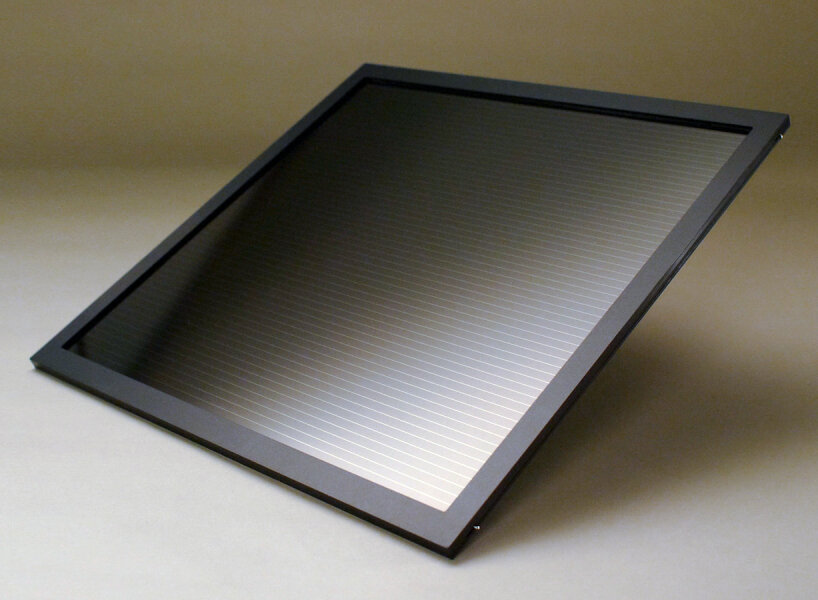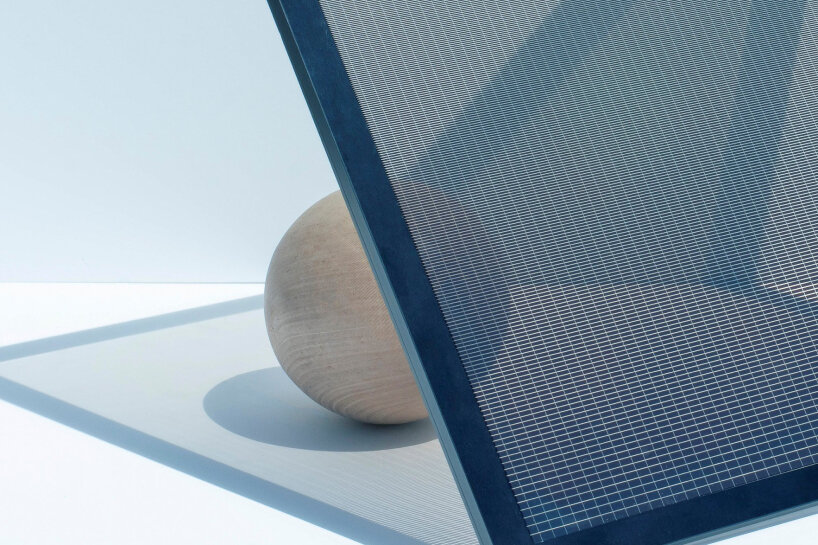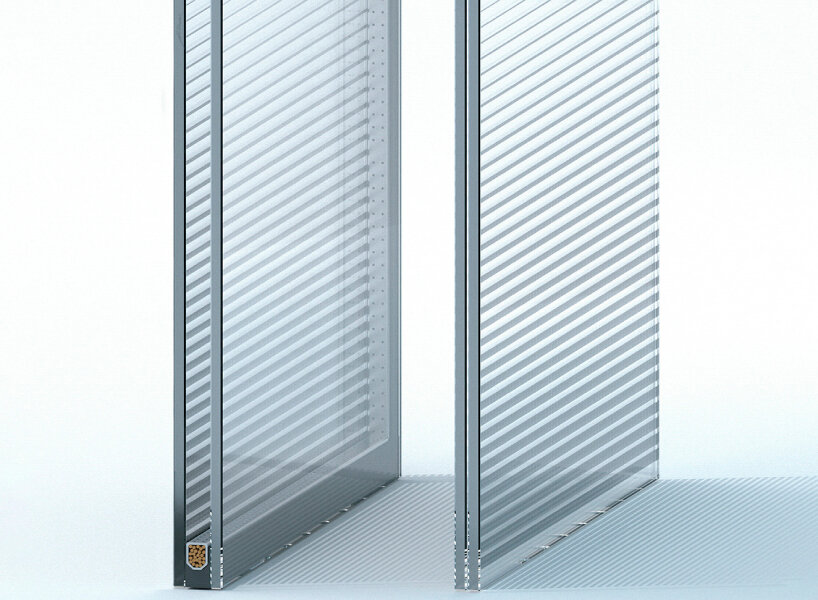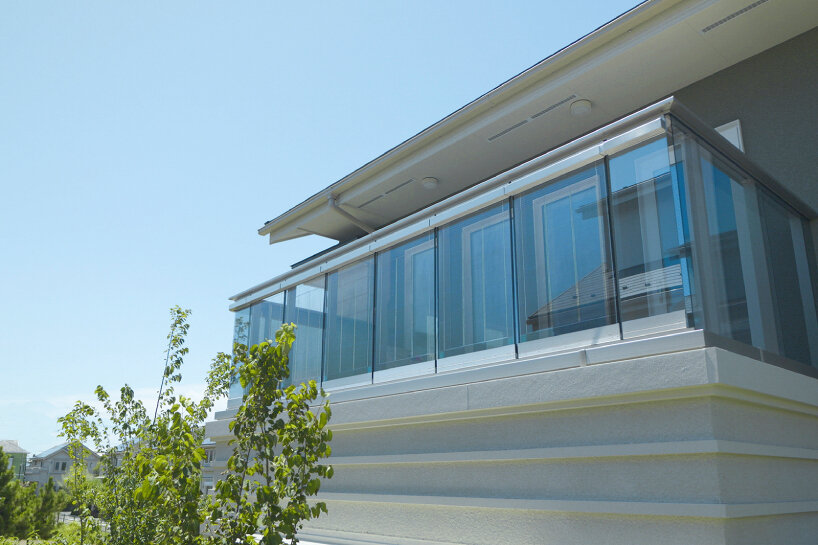Panasonic Holdings Corporation has developed a prototype for power-generating windows with Perovskite solar cells that can convert the facade into a renewable energy source. As the glass panes directly absorb energy from the sun while shielding the inside of the building from its rays, they generate electricity and automatically power up the building and its equipment.
Panasonic has started its long-term implementation and demonstration of the photovoltaic glass with Perovskite solar cells, which includes technical tests that will last more than a year. They will be installed in the newly constructed model house in the Fujisawa Sustainable Smart Town in Kanagawa Prefecture, Japan.
 images © Panasonic Group
images © Panasonic Group
PEROVSKITE SOLAR CELLS CAN EFFICIENTLY ABSORB SUNLIGHT
Panasonic aims to create glass integrated with Perovskite solar cells. The design directly embeds the photovoltaic layer onto the substrate, creating power-generating glass. In this way, whenever buildings use these photovoltaic windows with solar cells, they directly harness the sun’s power all over the architecture and not just on the roof.
Perovskite is known for its ability to efficiently absorb sunlight and the reduced need for high-heat treatment, meaning it can be produced with much less energy, making them cheaper and more sustainable. Panasonic is also combining its original inkjet coating method and laser technology to make these glasses flexible in terms of size, transparency, and design to cater to specific measurements and requirements.
 As the glass panes absorb energy from the sun, they generate electricity and power up the building
As the glass panes absorb energy from the sun, they generate electricity and power up the building
PHOTOVOLTAIC GLASS WITH SOLAR CELLS AS WINDOWS AND WALLS
Panasonic acknowledges that global demand for photovoltaics for renewable energy has risen as companies seek to achieve carbon neutrality and decarbonization. One issue may be the lack of space for installing solar cells, especially around urban areas, so Panasonic believes that placing them on windows and walls, plus instilling Perovskite solar cells, is a suitable alternative.
Panasonic recognizes that there have been challenges in terms of transparency and design when installing conventional silicon-based solar cells on glass surfaces. The research team hopes that by integrating Perovskite solar cells into glass, they can increase on-site power generation by turning building facades into power plants, all while making the design adaptable to specific requirements.
 Panasonic will make the deisgn flexible in terms of siz and transparency to cater to specific measurements
Panasonic will make the deisgn flexible in terms of siz and transparency to cater to specific measurements
 the research team hopes that by integrating Perovskite solar cells into glass, they can increase on-site power generation
the research team hopes that by integrating Perovskite solar cells into glass, they can increase on-site power generation
 lead Yukihiro Kaneko of the Applied Materials Technology Center, Panasonic Holdings Corporation
lead Yukihiro Kaneko of the Applied Materials Technology Center, Panasonic Holdings Corporation


